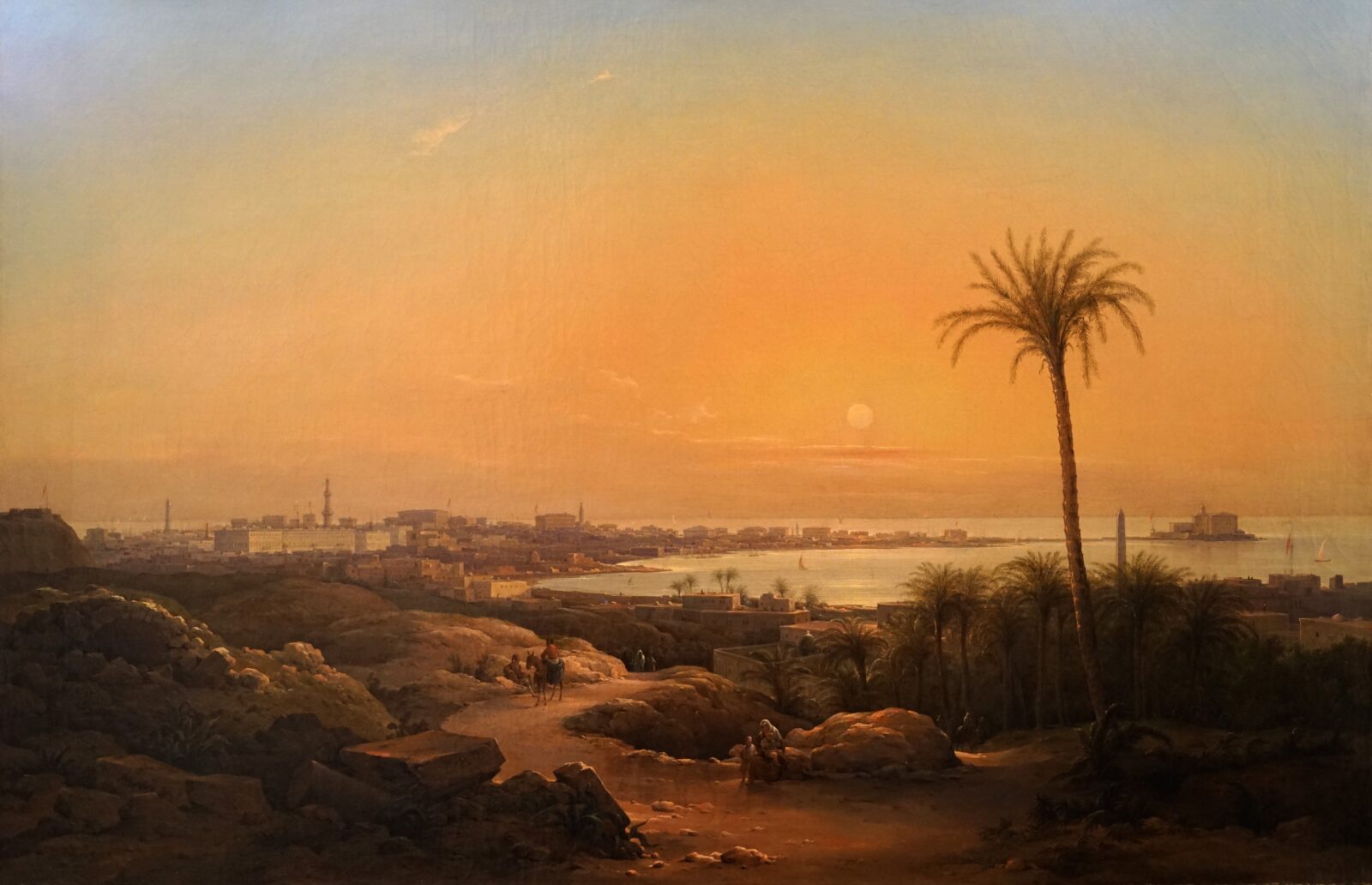Examination of painting today: an art expert tells

How is the examination of paintings carried out, what does a collector and art connoisseur need to know? An art expert will answer these questions Center for Artistic Expertise named after. I. E. Repina Ekaterina Gordeeva.
Over the past 50 years, scientific research into painting has made great progress, largely thanks to specialized scientific institutes in domestic and European countries. The examination of painting today continues to develop this area, but in a radically new direction.
Previously, in the study of painting one had to rely mainly on the subjective opinion of an expert, his intuition. This often led to errors. There are many high-profile stories of forgeries, for example, the falsification of Vermeer by Han van Meegeren or the forgery of ancient and Renaissance monuments by Alcheo Dossen (European histories). Today such errors are excluded. With the use of new technologies, the examination has moved to a qualitatively new level, since the work is carried out comprehensively: the knowledge and experience of an art critic, work with literature and documents are combined with technological research. Center for Artistic Expertise named after. I. E. Repina adheres to precisely this approach and is one of the leading expert organizations on the Russian antique market. There are separate independent organizations working in the interests of the client. They provide high-quality comprehensive research.
Why is art expertise necessary?
In the modern world, art is an investment, and expertise, in addition to museum research, is also largely related to the art market. Accordingly, the examination of works of art is carried out by art experts for collectors and art dealers, primarily to confirm the originality of the work and further conduct a commercial transaction. It is necessary to distinguish between examination and attribution of works of art. Attribution - part of the examination process - allows you to determine the author of an anonymous work, who or what is depicted. Sometimes, if initially there are no clues (documents, signatures or inscriptions), it is impossible to identify the author. Expertise works with more specific material: during research, it is possible to confirm or refute the alleged authorship, verify or approximately determine the date of creation; if it is anonymous, name the school and time of creation.
Based on the results of the research, the owners of the works receive a certificate of authenticity. Certificates of the Center of Expertise named after. I. E. Repin are accepted at all domestic and international auctions and are a “sign of quality”. The examination not only insures against the purchase of a fake, but also increases the price of the originals, as it acts as a guarantor of their authenticity. The expert opinion also allows evaluation of work to determine its market value. Center of Expertise named after. I.E. Repina works in both directions: she conducts examination and assessment from two independent experts. This is quite convenient for clients, as it allows them to immediately collect a package of documents.
How is a painting examination carried out?
The first stages involve the work of an art expert. Often an experienced specialist has already visual inspection can determine: original work, falsification or copy. How? The old principle of knowledge, based on the psychology of recognition and comparison, comes into play. The first impression is formed literally in a minute. This is followed by a more detailed study. The expert compares the artistic motive, the construction of the composition, the color scheme, the nature of the strokes - how typical they are for the artist’s handwriting. This stylistic analysis. The expert also compares the signature with known examples; correlates the artist's biography with an estimated or indicated date.
The general appearance of the work, the state of preservation of the work must be recorded, and the degree of aging of the materials is assessed. To do this, specialists, in addition to carefully considering work in visible rays, turn to invisible light technologies: namely, they look at the work in ultraviolet (UV) и infrared (IR) radiation. The equipment is located directly in the office and allows you to immediately conduct these initial studies. UV and IR can reveal restoration interventions and late entries, see hidden inscriptions, author's alterations, etc. Some materials can be identified by the glow of paints in UV, for example, red kraplak glows bright pink “Pink d'ore" UV helps detect hidden writing. Recently, during a UV study of one painting, an inscription on the stretcher was discovered: “from collection N", which made it possible to establish the provenance of the painting and confirm its authenticity. In IR, in addition to invisible inscriptions, you can see the master’s drawing hidden under a layer of paint. The nature of the drawing can confirm the authenticity of the work. For example, a detailed preparatory drawing is typical for artists of the academic school of the 19th century, including the master of landscape and landscape painting N.G. Chernetsov, whose works are rarely found on the art market and are of particular interest.
For a more detailed study of the materials of the paint layer, an art expert examines the painting in microscope. The magnification of the microscope is many times higher than the magnification of the magnifying glass lens that experts previously used. Now a specialist can see the smallest details, consider the “volume” of the painting: strokes, more impasto or transparent, which form the texture of the image. The paint layer is usually varnished. And all painting is a grid craquelure – cracks that form when paint and base dry out, and sometimes from mechanical damage. This is the most obvious sign of aging. Typically, craquelure evenly breaks through all layers of painting: from primer to varnish. The signature is examined especially carefully to determine its simultaneity with the paint layer. If the paint flows into the cracks, lies on top of them, or even on top of the varnish, this is a sign of a later, fake signature.

Photo image of a late signature through a microscope: paint flows into the craquelure of the paint layer
After the initial analyzes of stylistic expertise, experts move on to more detailed physical and chemical research. The Repin Center of Expertise pays special attention to this. One of the most important stages of the examination is radiography paintings. X-ray allows you to see through a picture: all its layers at the same time. X-rays can be used to analyze losses and restoration interventions, even the oldest ones hidden by new restorations. X-rays give an idea of the artist’s method and manner of work and reveal changes in composition. X-ray is a painting’s passport, which preserves its history and which cannot be faked. There are times when x-rays reveal something that the artist intentionally hid. During the examination at the Repin Center there was a painting by artist K. S. Petrov-Vodkin “Woman in a Hat” from 1907–1908. When examining the X-ray photographs, they discovered that another layer was hidden under the top layer of the painting: a composition with a young woman holding a hat. This is very typical of Petrov-Vodkin; many of his paintings are painted on previously used canvases. This characteristic feature allows us to speak about the authenticity of the work.
A separate issue of the examination is dating of the painting. To do this, chemical research methods are often used. Center of Expertise named after. I. E. Repina collaborates with the MMOMA research laboratory, where there is the most complete set of the most modern equipment. Technological experts take samples from the painting - microparticles with all layers of the paint layer - they are examined in the laboratory. It is necessary to determine the composition of the materials used - pigments and binders, time of their use and degree of aging. This data allows you to determine the approximate time of creation of the work.
At the Repin Center, as a primary “express” chemical study, X-ray fluorescence analysis (XRF), which detects metal impurities in pigments. Modern equipment allows you to work non-destructive method, that is, without sampling. For example, in a painting by a 1921th-century artist, significant titanium (Ti) impurities were found. Titanium paints began to be used in industrial production in 1930, but only in the XNUMXs did they come into widespread use. Therefore, the painting cannot be a genuine XNUMXth century painting. Such an analysis is carried out quite quickly, but does not always give such obvious results. Still, a full-fledged chemical study is more detailed and accurate.
Technological expertise does not give direct answers, it is not always accurate, because paintings are created by people, and an art expert is needed to unravel their plans. It is he who interprets the data received and makes the final decision regarding authenticity, authorship and date. Technical and technological expertise remains at the service of the specialist and contributes to the evolution of our knowledge of art and artists.












